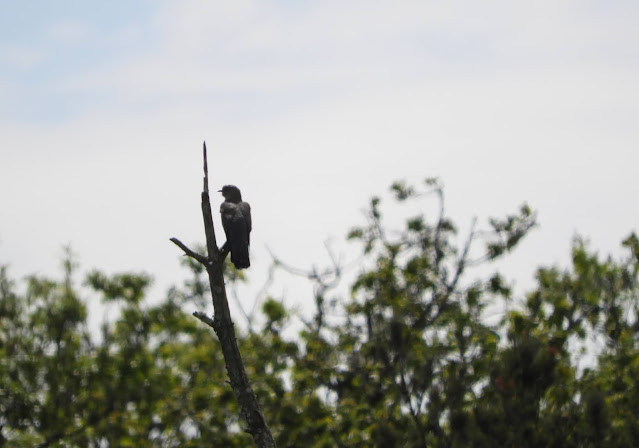This singing male Cuckoo was in the Bystock reserve this morning. I'm pretty sure it's only my fourth ever Cuckoo on Exmouth soil, and it's certainly the first I've photographed, albeit badly. Once more I've seen three different birds on three different heaths in the last few days - perhaps reason to be cautiously optimistic about their future on the pebbled heaths?
Field Penny-cress - Orcombe Point.
Common Tubic Alabonia geoffrella. Lots of these on Orcombe this morning.
Bee Orchid - one of twenty counted on the grass bank opposite Lidl. I spotted a tweet from Sarah Butcher last night (thank you Sarah!), about the presence of some Bee Orchids in Exmouth. A quick visit early this morning was more than worth the effort, as the bank was liberally sprinkled with my first ever Grass Vetchlings - absolutely stunning flowers and not one I thought I'd see locally. Additionally I found Smooth Tare, Common Vetch and yet more Bithynian Vetch, as well as Yellow Wort. Clearly a very special little spot!
Grass Vetchling - lots of this on the grass bank along Dinan Way - a glorious crimson-pink, jewel-like colour.
Smooth Tare.
Corky-fruited Water-dropwort.
Pale Butterwort - carnivorous - note the 'death-trap' leaves.
No idea what the larvae on the stem is...
Common Milkwort - all flowers on Bystock meadow seem to be white white/pink/lilac.
Keeled Skimmer. Still only low numbers of dragons/damsels out on the commons at the moment, but I did have the odd Black-tailed Skimmer and Large Red Damselfly.
Numbers of Small Heath are gradually picking up. Several Common Blues, Green Hairstreaks and a Small Copper also noted today.
A migrant Painted Lady pausing on the parched soil. A few Silver Ys buzzing around today too.
Heath Spotted Orchid - it's hard to walk past these without pausing for a photo.
Common Cotton-grass - at its best at the moment.
Early Marsh Orchid - presumably of the race pulchella which is found on acidic soils. I misidentified these as Southern Marsh the other day, but following some reading, realised my mistake. Note the flower shapes of this confusing pair below:
This is from 'Francis Rose'. It depicts (I presume) the more salmon-coloured incarnata Early Marsh, but note the shape with the 'lip' looking narrow, with pushed-back sides. A pretty good match I think.
This is the illustration for Southern Marsh - quite different in shape with a much fuller lower lip.

























No comments:
Post a Comment